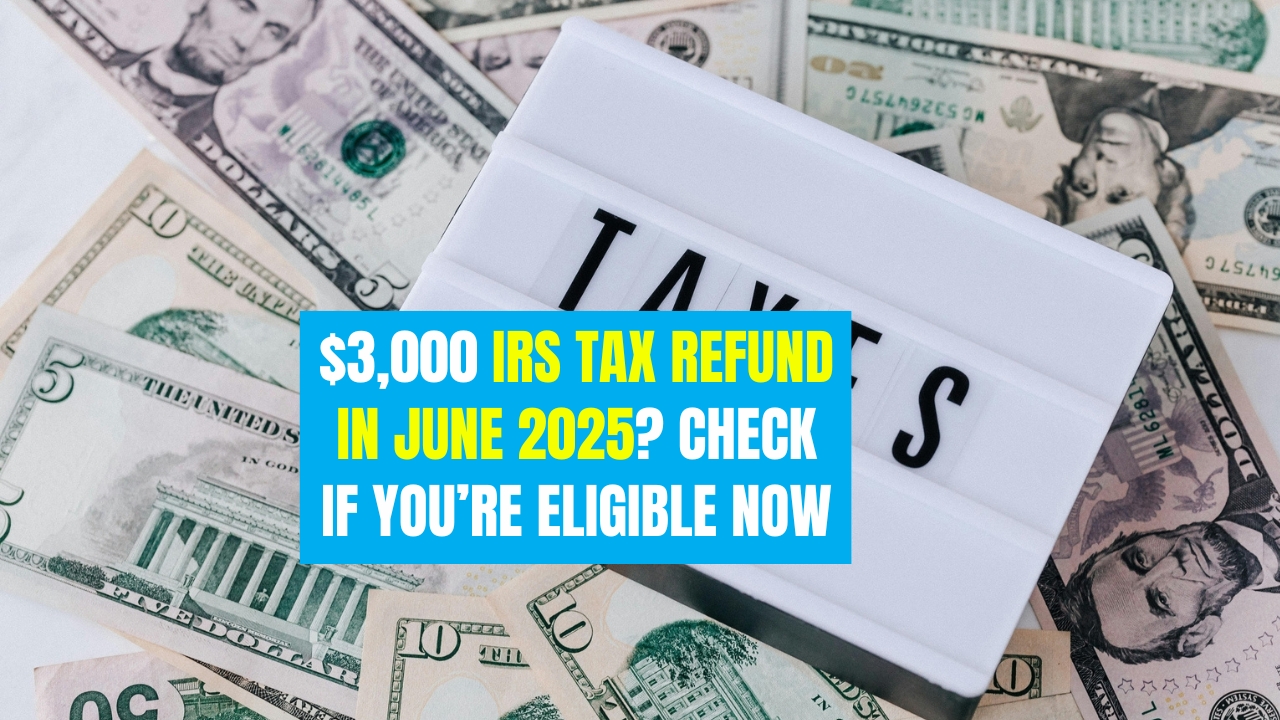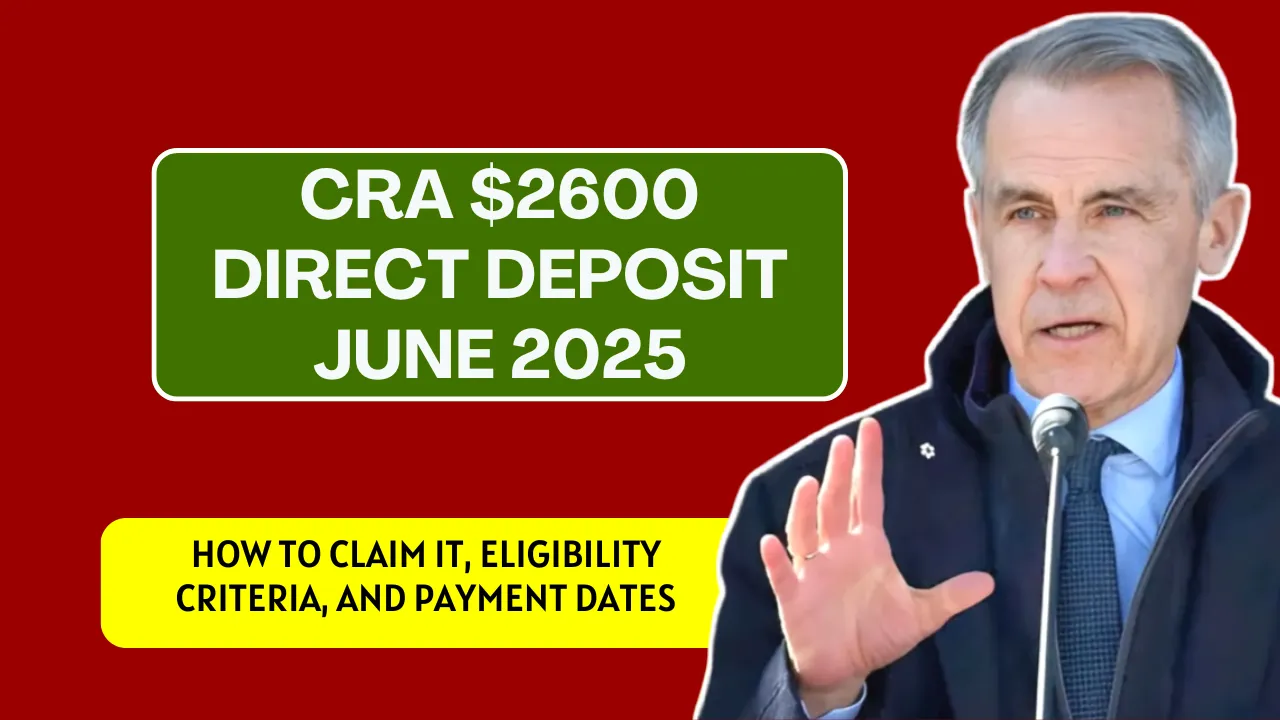Many Americans are eagerly watching their bank accounts this summer, wondering if a sizable tax refund might be on the way. The talk of a $3,000 IRS tax refund in June 2025 has created plenty of buzz, and while some people may receive that much, it’s not a guaranteed amount for everyone. The total refund you’re entitled to depends on your income, tax credits, and how much tax you paid throughout the year.
The idea of a $3,000 IRS tax refund is realistic for many households, especially those with dependents or lower incomes. Credits like the Earned Income Tax Credit (EITC), Child Tax Credit (CTC), and education credits all play a role in raising the refund amount. But to actually receive the money, you need to file your taxes correctly and, if eligible, on time—especially if you live in an area granted an extension.
$3,000 IRS tax refund
The $3,000 IRS tax refund being discussed for June 2025 isn’t a bonus or stimulus payment—it’s simply the maximum some taxpayers may receive based on their 2024 tax filings. For low- to moderate-income families, this refund can be achieved through a mix of tax credits and overpaid taxes. But keep in mind that not everyone will qualify for the full amount. If you’re unsure how much you’ll get, the IRS offers tools to help estimate your refund.
Overview Table: Key Refund Details for 2025
| Detail | Information |
| Maximum Refund Estimate | Up to $3,000 |
| Who May Qualify | Low- to moderate-income earners with dependents |
| Credits That Contribute | EITC, Child Tax Credit, Education Credits |
| Disaster-Affected Deadline | Extended to Nov. 3, 2025 (in some regions) |
| Average Refund Timeline | Around 21 days for e-filed returns |
| Refund Tracking Tool | “Where’s My Refund?” on IRS.gov |
| Filing Status Consideration | Single, Head of Household, Married Filing Jointly |
So, What’s This $3,000 Refund All About?
The $3,000 figure represents an estimated total refund for eligible taxpayers. This includes overpaid income taxes and valuable tax credits. For example:
- Earned Income Tax Credit (EITC): Available to workers with low to moderate income, especially those with children.
- Child Tax Credit (CTC): A credit of up to $2,000 per qualifying child.
- Education Credits: These can reduce the amount of tax you owe or boost your refund if you paid for higher education.
Ultimately, the amount you receive depends on your income, family size, and how much tax you had withheld throughout 2024.
Extended Deadlines for Disaster-Affected Areas
If you live in a disaster-declared area, like parts of Arkansas affected by recent storms, you may have extra time to file your taxes. The IRS has extended the deadline to November 3, 2025, for these residents. This extension allows more time to gather documents, file correctly, and still be eligible for a full refund.
To check if your area qualifies for an extension, visit the IRS’s disaster relief section on their website.
When Will You See That Money?
If you filed your tax return in mid-May and opted for direct deposit, you could see your $3,000 IRS tax refund land in your bank account by early to mid-June. The IRS typically processes e-filed returns in about 21 days, although some refunds may arrive sooner or later depending on the complexity of your return.
Delays can happen, especially if there are errors, missing documents, or you’ve claimed credits that need extra verification, like the EITC or ACTC.
Keep an Eye on Your Refund Status
You don’t need to wait in the dark. The IRS provides a helpful online tool called “Where’s My Refund?” to track your refund’s progress. The tool walks you through three main stages:
- Return Received
- Refund Approved
- Refund Sent
To use the tool, you’ll need your Social Security number, filing status, and the exact refund amount you’re expecting. Check the site every few days for the most up-to-date status.
What Slows Down Refunds?
Even though most refunds are issued within three weeks, some taxpayers may experience delays. Common reasons include:
- Incorrect bank account or routing information
- Math errors or typos in your tax forms
- Paper filings instead of e-filing
- Claiming credits like the EITC or ACTC, which may trigger extra IRS review
- Missing or mismatched information that requires manual processing
Always double-check your tax return before submitting it to avoid unnecessary slowdowns.
Tips to Get Your Refund Faster
Want to get your refund faster next year? Here are a few tips:
- E-file your return: Electronic filing is faster and less prone to errors.
- Choose direct deposit: It’s quicker and more secure than a paper check.
- Double-check your information: Ensure your Social Security number, income, and banking details are accurate.
- Prepare early: File as soon as the IRS begins accepting returns to avoid bottlenecks.
Being proactive can make a big difference in how soon you receive your refund.
Refunds Are Still Rolling Out in June
Just because the April tax deadline has passed doesn’t mean refunds have stopped. The IRS continues to issue refunds each week. If you filed in May—or live in an area with an extended deadline—your refund is still being processed.
If you’ve been waiting more than 21 days and haven’t received your money, check the IRS tracker or contact them directly. Rest assured, $3,000 IRS tax refunds are still being paid out to eligible filers across the country.
FAQs
Is the $3,000 refund a new government check?
No, it’s not a separate stimulus—it’s the total amount some taxpayers can receive as a refund after filing.
How do I qualify for the full $3,000?
You may qualify if you’re eligible for credits like the EITC, CTC, or education credits and had enough tax withheld during the year.
When should I expect the refund if I filed in May?
Typically within 21 days, meaning early to mid-June if you filed electronically and chose direct deposit.
Can I still file if I live in a disaster area?
Yes, some areas have extended deadlines—up to November 3, 2025. Check with the IRS for details.
What should I do if my refund is delayed?
Use the “Where’s My Refund?” tool or contact the IRS if it’s been more than three weeks since you filed.
Final Though
While not everyone will get the full amount, a $3,000 IRS tax refund is possible for many Americans, especially those with children or qualifying income levels. With inflation still a concern, this money can provide much-needed relief. Make sure you’ve filed correctly, track your refund status, and take steps to avoid delays. If you’re still waiting, check the IRS tracker—and stay alert for any updates on additional credits or relief options in 2025.
















